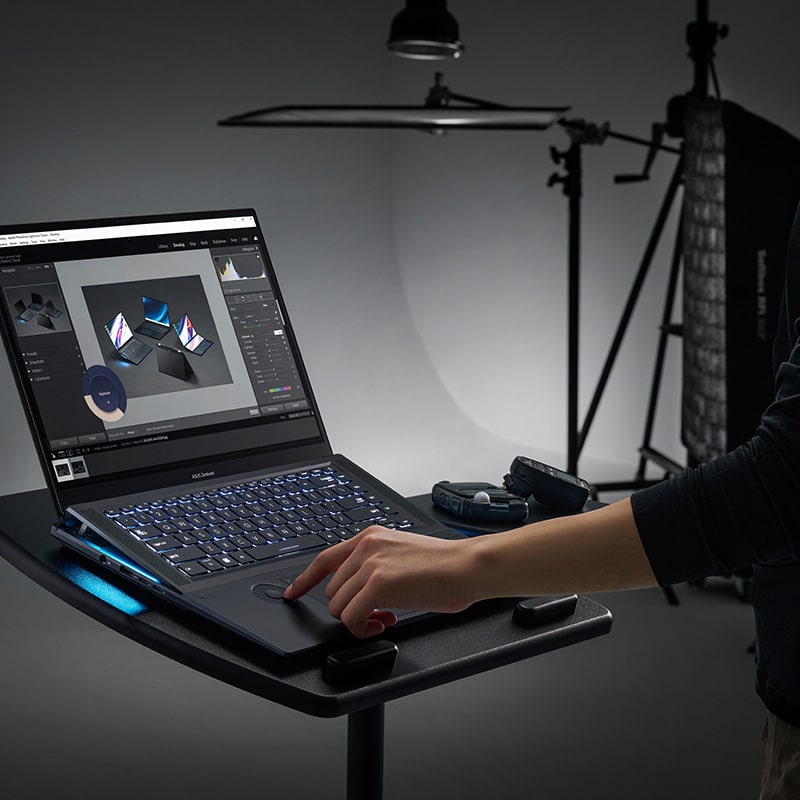
Aug 17, 2023
The computer users who need their machines to handle heavy workflows
are not forced anymore to use a desktop. Many laptops nowadays are
high-performance machines that can perform on par with some
desktops. One way laptops do this is through the miniaturization of
powerful components like the CPU and GPU, which enables engineers to
fit high-performance parts into a thin laptop chassis. But these
components wouldn’t be able to work as well if not for top-notch
cooling. This is true because of throttling – which is a safety
system built into computer systems that slows down components to
avoid overheating.
How heat is dissipated is often the reason why some laptops perform
better than their counterparts with the same configuration. An
example of a powerful heat dissipation system is the ASUS IceCool
technology. Read on to learn more about this unique heat dissipation
solution and how it works.
What Is ASUS IceCool Technology?
ASUS IceCool technology is an active cooling system, which means it
employs fans to help dissipate heat. ASUS IceCool, IceCool Plus, and
IceCool Pro are found in many ASUS laptops across the Vivobook,
Zenbook, and ProArt Studiobook lines. These are the three levels of
signature ASUS cooling solutions, with the Pro variant being the
most robust.
In the IceCool system, there are a few design elements responsible
for transferring the hot air out of the laptop.
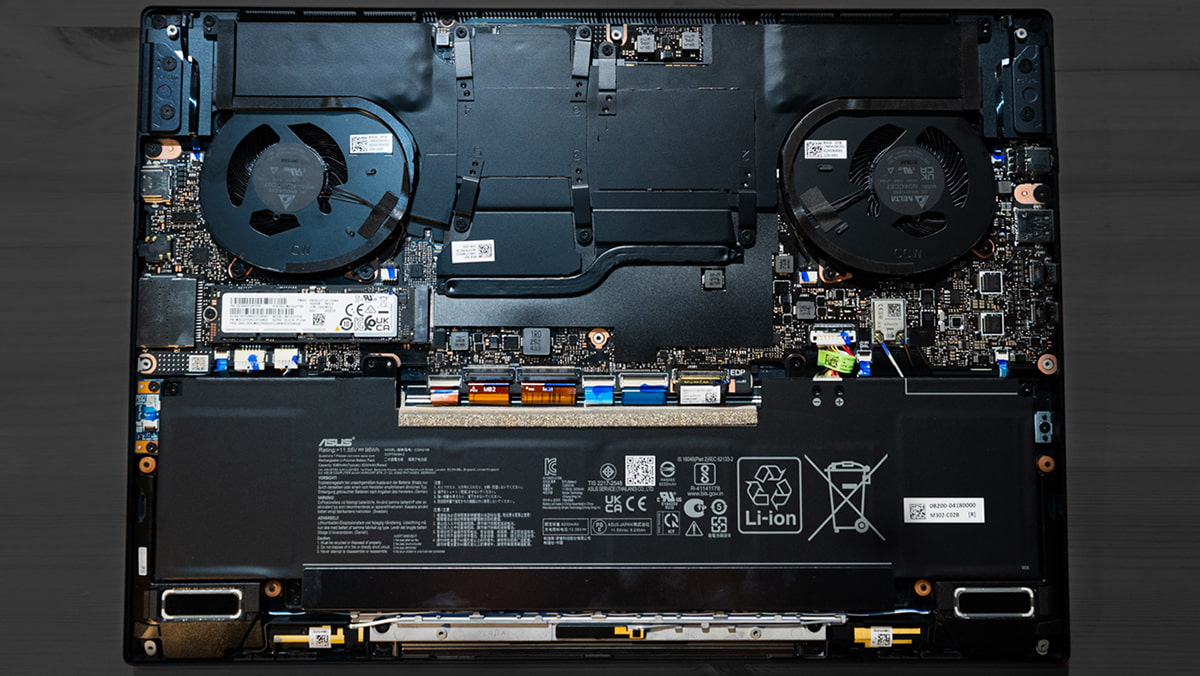
ASUS Zenbook Pro 16X OLED with open lid, exposing all the key
components inside
First, there is a thin layer of thermal paste and a cold plate
directly applied on the key components that tend to get hot, such as
the CPU and GPU. These elements ensure efficient heat transfer
between the component surface and the heat pipe or vapor chamber.
Then there are heat pipes. Composed of thermally conductive metal,
these hollowed pipes contain a small amount of liquid coolant. They
usually connect the key components with the fans.
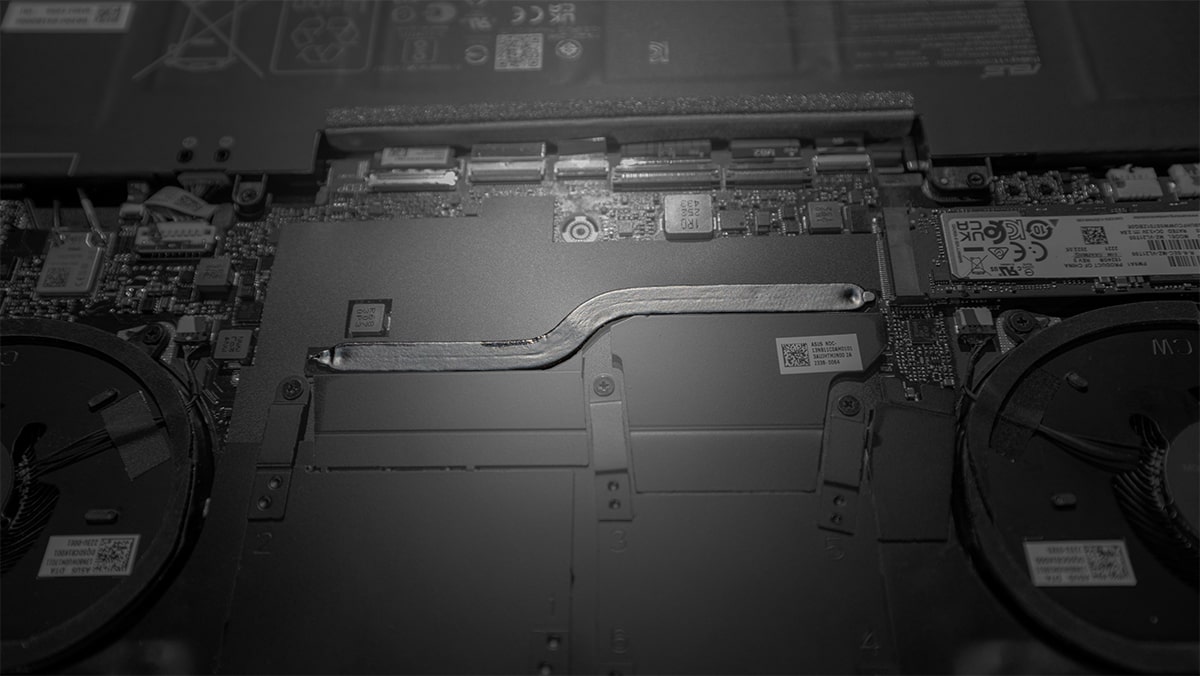
A heat pipe (in color and highlighted) in the IceCool Technology
laptop cooling solution in Zenbook Pro 16X OLED
Some high-performance laptops either supplement or replace heat
pipes with a more robust solution called a vapor chamber. It’s
somewhat similar to a heat pipe, but larger and more powerful.

A vapor chamber (in color and highlighted) in the IceCool
Technology laptop cooling solution in Zenbook Pro 16X OLED
At the end of the heat pipe or vapor chamber, there is usually an
array of metal fins. This part is called a heat exchanger. It’s
responsible for transferring the hot air away from the heat pipe or
vapor chamber via the vent.
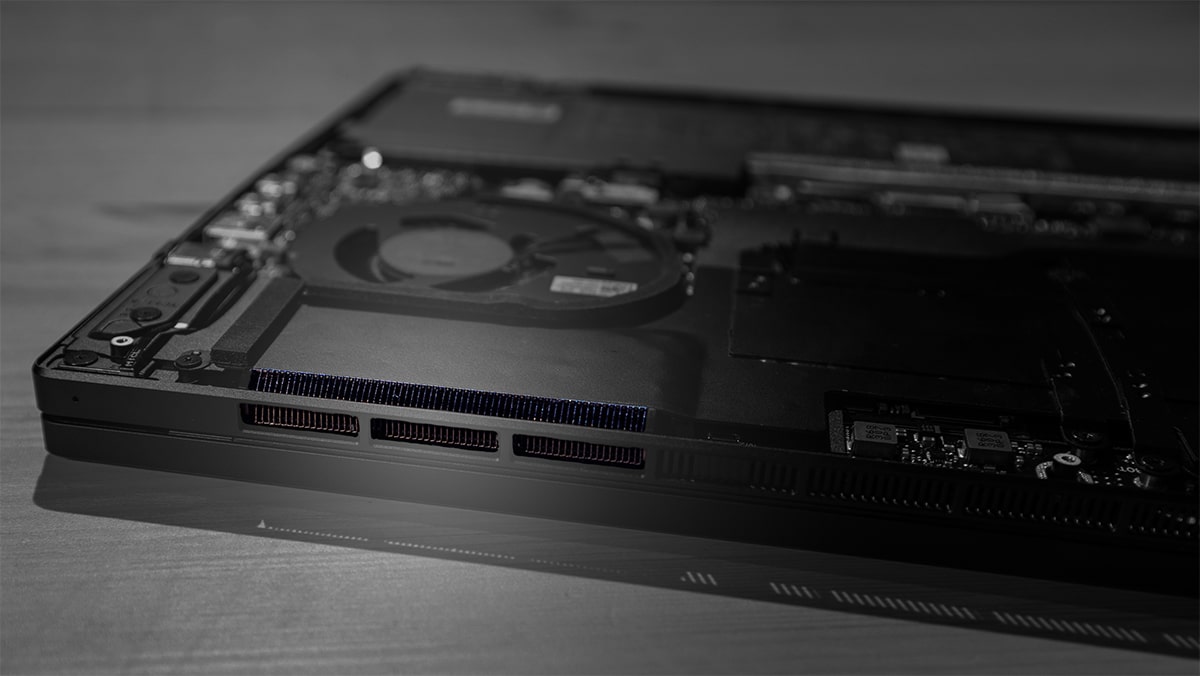
Heat exchanger fins and the vent (in color and highlighted) on the
back of the Zenbook Pro 16X OLED with the IceCool laptop cooling
system
Nearby, will find another key cooling component — the fan. Some
laptops feature a single fan, while the high-performance machines
like Zenbook Pro 16X OLED have a dual-fan setup.
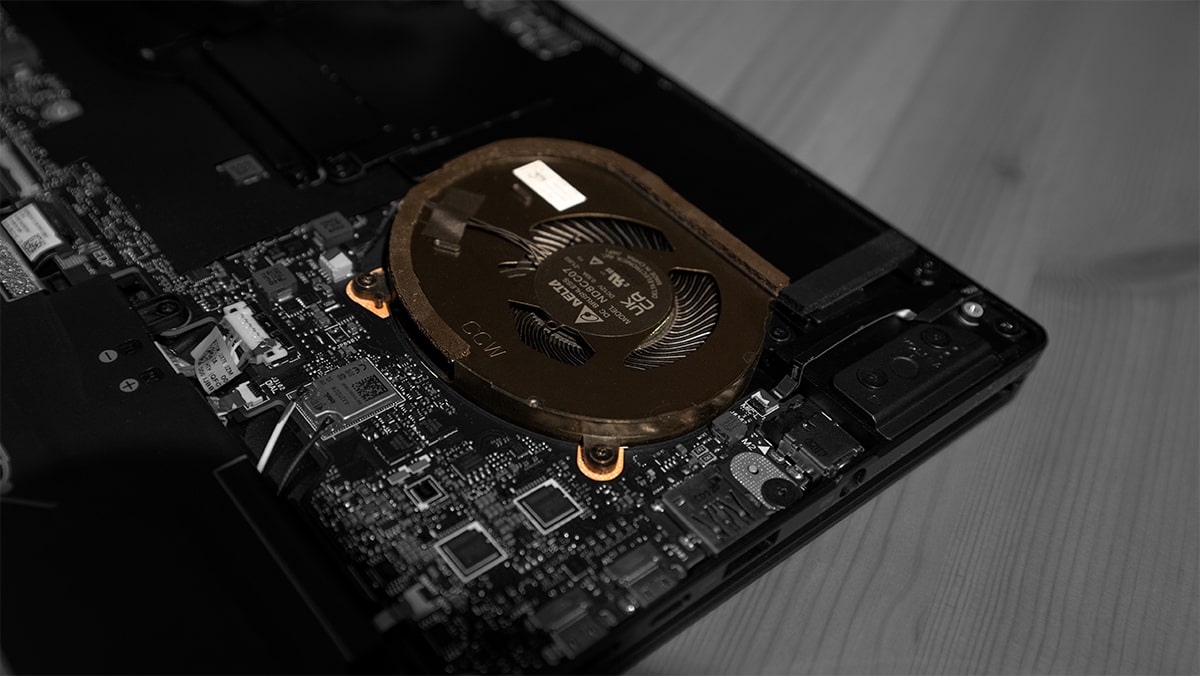
One of the two fans (in color and highlighted) inside Zenbook Pro
16X OLED with IceCool technology laptop cooling system
The Heat Dissipation Process
Let’s take a look at how the heat dissipation process works in a
Zenbook Pro 16X OLED with a vapor chamber.
When components like the CPU or GPU are operating at high speeds,
they create heat. That heat begins its journey out of the laptop
immediately. The thermal energy is transferred from the processor’s
surface to the cold plate (made of conductive metal such as copper)
via thermal paste. The role of the cold pad is to then pass the
thermal energy to the vapor chamber.
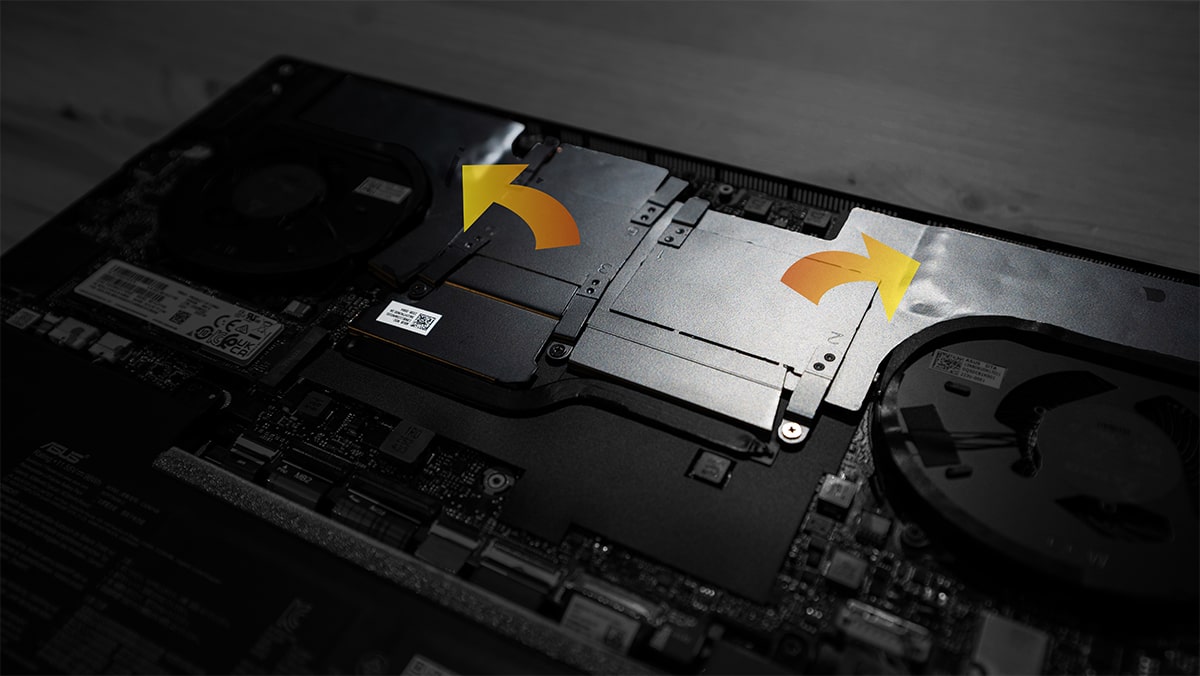
CPU and GPU transfer heat to the vapor chamber inside the Zenbook
Pro 16X OLED with IceCool technology laptop cooling solution
The faster this process, the better. To maximize the speed of
thermal transfer, the Zenbook Pro 16X OLED uses a liquid-metal
solution, which proves to be one of the most efficient thermal
technologies available.
When the heat reaches the vapor chamber, it causes the coolant
liquid stored inside the chamber to evaporate. The high-pressure
vapor will then quickly travel to the cooler sections of the vapor
chamber, transferring the heat away from key components with it.
Once in the cooler section, the vapor condenses back to its fluid
form due to temperature difference, and is absorbed by the wick
inside the heat pipe while releasing the thermal energy. The fluid
then travels back to the hotter section to repeat the process.
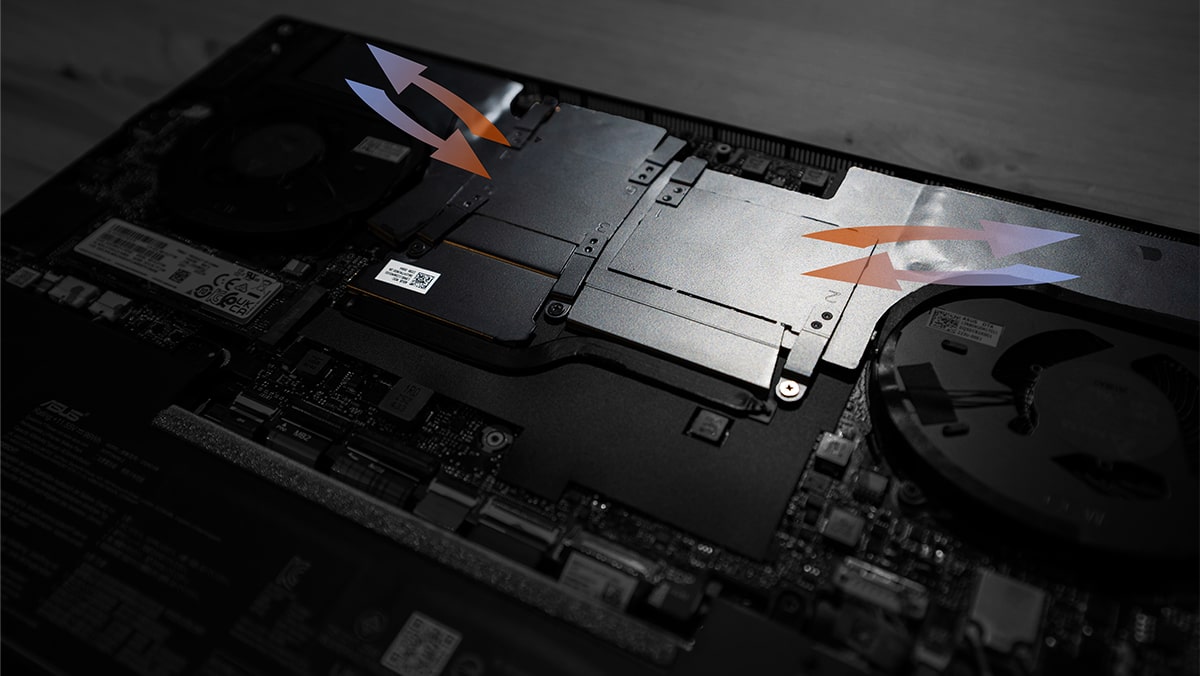
The heated vapor inside the the Zenbook Pro 16X OLED’s vapor
chamber is transferred to the cooler section of the vapor chamber,
where it sublimates and travels back to the initial positon,
transferring the heat towards the fans and the heat exchanger
At the ends of the vapor chamber, there are a heat exchanger: two
sets of thin conductive fins. Their role is to transfer the heat
away from the heat pipe and out of the chassis via the vent.
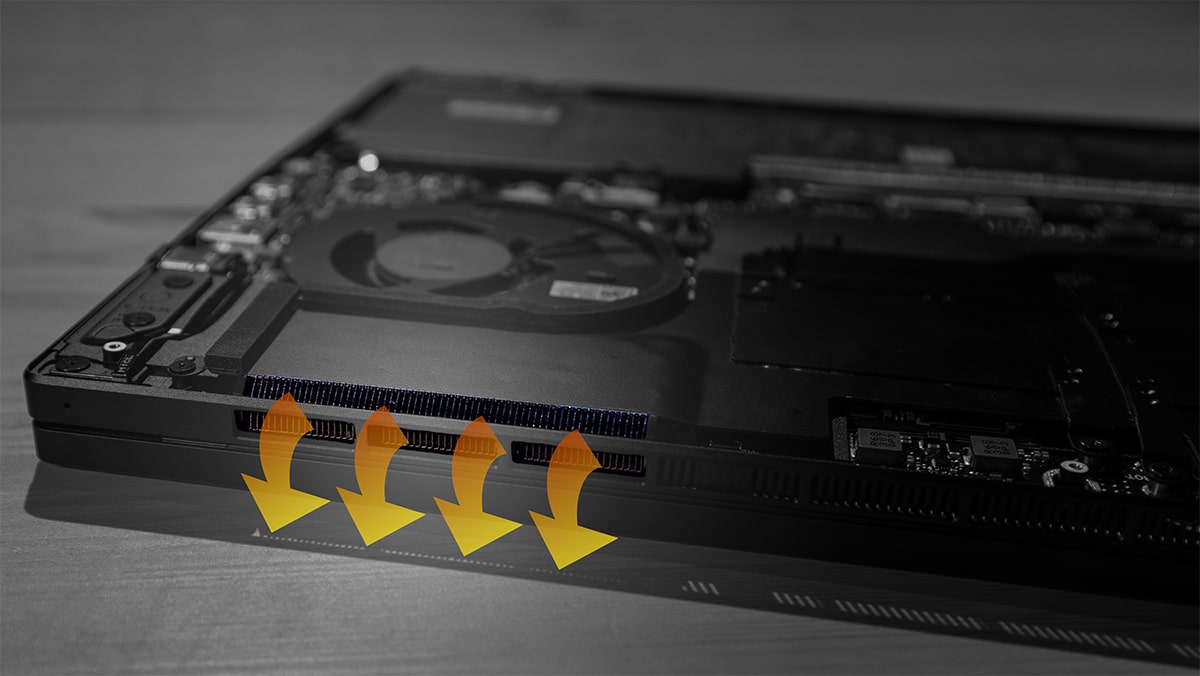
The fins of the heat exchanger transfer the heat out of the
Zenbook Pro 16X OLED through a vent on the back side of the laptop
The fans intake the cool air from outside the laptop chassis and
move it towards the heat exchanger and then vent, facilitating the
heat exchange in the fins, and then push the hot air out. At the
same time, this cool air help cool down the surface of the vapor
chamber, causing the temperature difference between different
sections of the chamber. This helps facilitate the sublimation
process of the heated vapor so that the process could start all over
again.
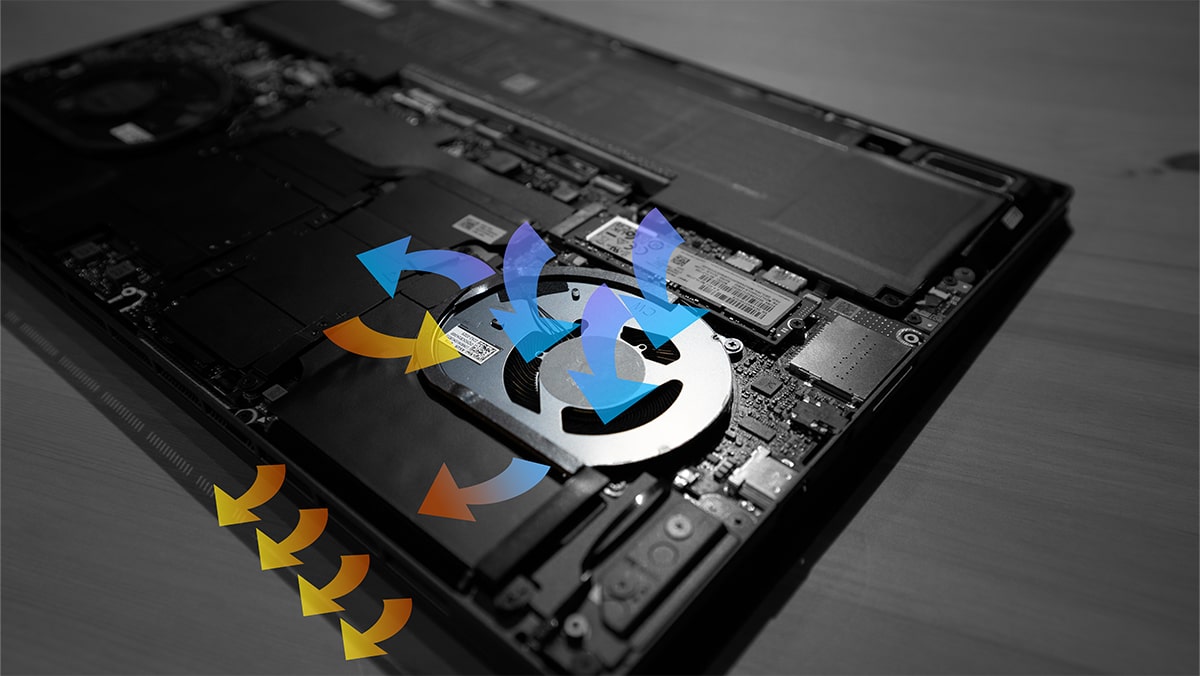
The IceBlade-equipped fans with unique Aero Jet Flow design inside
the Zenbook Pro 16X OLED intake the cool air from outside the
laptop and transfer it towards the vapor chamber and the heat
exchanger while transferring the heated air inside of the laptop
toward the vent at the same time, facilitating the heat exchange
process.
The measure of the cooling efficiency is Thermal Design Power (TDP).
Measured in watts, the higher the number, the more top-performance
without throttling you can expect from your laptop.
What’s Makes IceCool Technology Different?
ASUS IceCool tech shines in three areas: unthrottled performance,
low noise levels, and comfortable temperatures of frequently touched
areas. The heat pipes and fans are placed strategically to transfer
hot air away from the key components as well as areas you are most
likely to touch, making for a comfortable usage experience.
For the most robust cooling, look for a laptop with the ASUS IceCool
Pro thermal design — such as the Zenbook Pro 16X OLED. This
top-of-the-line high-performance laptop features the Thermal Grizzly
liquid metal thermal compound, which is machine-applied on the CPU
heatsink to push the heat dissipation capabilities even further.
It also features a robust 3D-curved vapor chamber solution in
addition to a heat pipe. It’s a tightly sealed metal chamber filled
with liquid coolant. It transfers heat away from the key components
via high-pressure vapor — similarly to heat pipes but much more
powerfully.
The IceBlades fans in high-performance ASUS laptops are composed of
unique, ultrathin 3D-curved fan blades made of unique lightweight
but durable composite. There are usually one or two fans in a
laptop, depending on how powerful the components inside are. The two
fans in the Zenbook Pro 16X OLED for example have 97 blades each,
making for powerful yet quiet cooling.
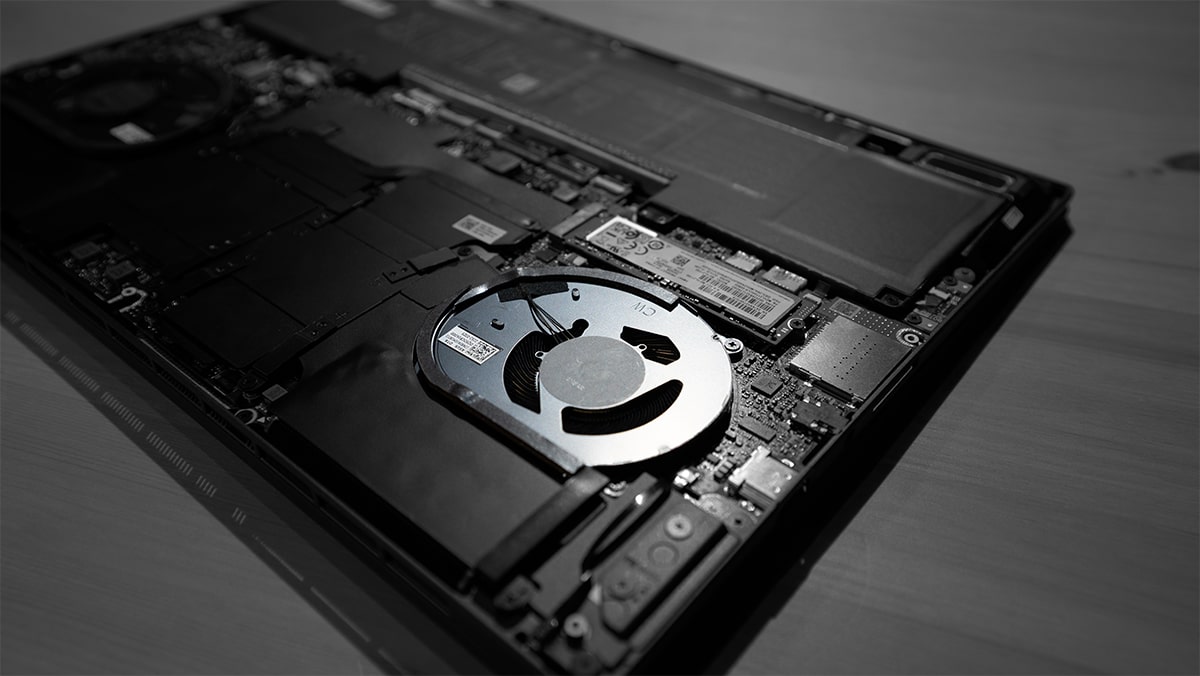
High performance cooling fan (in color and highlighted) with 97
IceBlades and a unique Aero Jet Flow fan design inside the Zenbook
Pro 16X OLED laptop with the IceCool technology laptop cooling
system
The fans inside the Zenbook Pro 16X OLED feature a special AJF (Aero
Jet Flow) design. These unique fans have one added air outlet. Most
fans come with a single outlet, directed towards the vents, so the
fan pushes the hot air out of the laptop. The AJF’s second outlet is
directed towards the middle of the chassis. Aside from delivering
cool air to the heat exchanger and pushing heated air outside, it
also transfers some of the cool air towards the middle areas of the
chassis, increasing overall airflow inside the chassis by as much as
12.5% and decreasing the laptop’s surface temperature by up to 7° C,
making for cooler, more pleasant-to-touch keyboard and palm rest
areas.
Finally, in the same laptop, users can also find another unique
feature: the AAS Ultra mechanism, that lifts the keyboard by 14.5
mm, allowing for 30% more air to flow into the laptop. The increased
airflow is used by the fans to cool down the heat sinks and the rest
of the chassis.

The side view of ASUS Zenbook Pro 16X OLED laptop with the lifted
keyboard, featuring the AAS Ultra mechanism (in color and
highlighted) for improved airflow inside the laptop’s body
If you’re looking for a laptop with desktop-like cooling, the
Zenbook Pro 16X OLED with liquid metal, a dual fan setup, a 3D
curved vapor chamber, and the AAS Ultra system offers a mind-blowing
185 W total TDP – a number usually reserved for high-end desktops.
It’s a powerful option for those in need of great processing power
and unhindered performance. Make sure to check it out!
Discover the Zenbook Pro 16X OLED




















